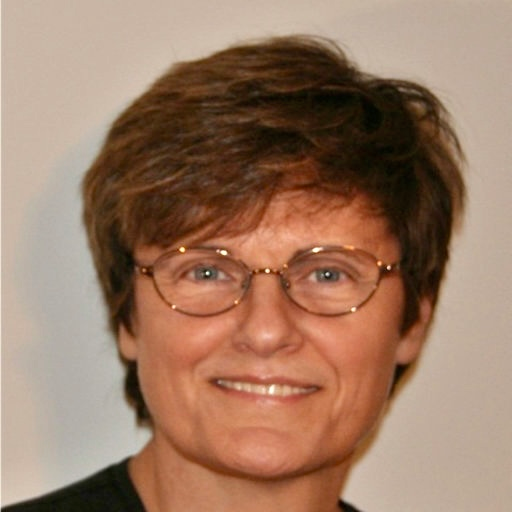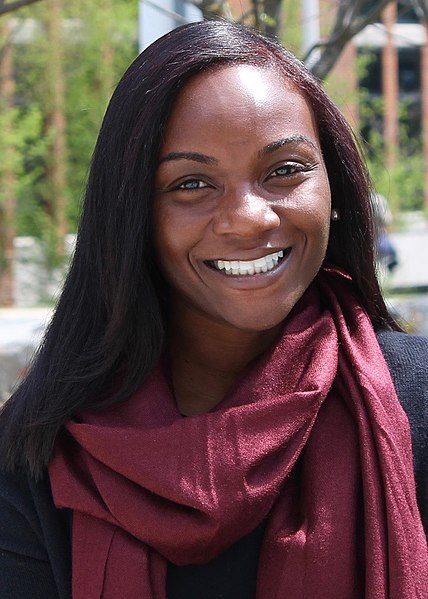Celebrating the Women in Science Leading the Fight Against COVID-19
 |
| The United Nations established February 11 as the International Day of Women and Girls in Science to further promote gender equality in the sciences and empower women and girls in STEM. In 2020, we saw a number of notable achievements from women in science. For the first time, a Nobel Prize in the sciences was awarded to two women, Jennifer Doudna and Emmanuelle Charpentier, for their pioneering work developing CRISPR gene-editing technology. And, while the emergence of the COVID-19 pandemic changed all of our lives, women scientists--including Kizzmekia Corbett, Kathrin Jensen, Katalin Karikó-- trailblazed paths from vaccine development to actual vaccinations in record time. Given that scientists worked tirelessly to research SARS-CoV-2 and develop effective treatments, we are celebrating inspirational women in science by spotlighting their groundbreaking discoveries. In 2020, unlike any other time in history, novel vaccines were rapidly developed, rigorously studied, and brought to market in under a year. Currently, there are two COVID-19 vaccines approved for use in the United States, with others in evaluation and development. The approved vaccines, developed by Pfizer/BioNTech and Moderna, are mRNA vaccines. These vaccines contain mRNA for the viral spike protein. This gives cells instructions to create the protein, triggering an immune response and antibody production in the recipient. While these are the first mRNA-based vaccines to be approved for use, the technology was developed, in part, thanks to one woman who persevered when few people believed it was possible. |
 Katalin Karikó via Wikimedia Commons. |
Katalin Karikó began her career in Hungary in the 1970s where she first saw the potential for mRNA in disease treatments. After immigrating to the United States for a position at Temple University and later the University of Pennsylvania, Dr. Karikó continued her mRNA research throughout the 1990s. At the time, her ideas were often dismissed because of the inherent limitations of synthetic RNA. When synthetic RNA was introduced, it was immediately destroyed by the immune system, often, before it could reach the necessary cells or tissue. In some cases, it caused an immune response that could be dangerous, especially to high-risk patients. |
| Believing she could overcome these limitations, she continued her research; however, it was considered financially risky and she was repeatedly denied funding. Eventually, without funding, she was demoted from her position. Despite a lack of resources, she continued to perform experiments and eventually, in collaboration with Dr. Drew Weissmann, she published a series of papers in 2005, describing a method to modify nucleosides found in the RNA that would overcome these hurdles. These discoveries laid the groundwork for mRNA vaccine development, and she is now a vice president at BioNTech. |
| When SARS-CoV-2 begin spreading widely, leaders at BioNTech began to think about potential vaccines and immediately reached out to Kathrin Jensen, SVP of Vaccine Research and Development at Pfizer. Dr. Jensen is a leading expert in vaccine development and pushes the boundaries to develop vaccines for difficult targets. She grew up in East Germany and her family fled to West Germany just before the construction of the Berlin Wall. She completed her Ph.D. at Philipps-University in Marburg, before moving to Cornell and then Massachusetts General Hospital. She continued her career at Glaxo and eventually joined the vaccine division at Merck. It was there that she was the first to develop a vaccine against human papilloma virus, Gardasil® 9, which is now widely used. |  Kathrin Jensen via LinkedIn. |
| She became the Chief Scientific Officer at Vaxgen; however, their efforts to develop a vaccine for anthrax were unsuccessful. She then joined Wyeth, where she provided her expertise to help build a vaccine against pneumococcus, commonly known as Prevnar13®, until the company was purchased by Pfizer in 2010. Since 2018, BioNTech had partnered with Jansen’s team at Pfizer with the goal of creating new vaccines for influenza using mRNA. At the onset of the COVID-19 pandemic, they used this technology to develop the first FDA-approved COVID-19 vaccine. |
 Kizzmekia Corbett via Wikimedia Commons. Kizzmekia Corbett via Wikimedia Commons. |
The next vaccine approved to prevent COVID-19 was developed by Moderna. For development of this vaccine, Moderna partnered with the National Institute of Health (NIH) to develop their vaccine. Kizzmekia Corbett led vaccine efforts at the NIH. Corbett first interned at the NIH during college before receiving her doctorate from UNC-Chapel Hill where she studied infectious diseases. She joined the NIH’s Vaccine Research team in 2014 where she had been working on SARS and MERS vaccine antigens, including developing a method to make spike proteins more immunogenic. At the onset of the pandemic, her team quickly used their knowledge of other coronaviruses to solve the structure of the SARS-CoV-2 spike protein and develop mRNA vaccine candidates. In addition to her work inside of the lab, Corbett has been hugely influential in promoting diversity in STEM careers and has worked closely with vaccine-hesitant populations, particularly in Black communities, to answer questions and build trust. |
| While only two vaccines have been approved by the FDA, others are currently in development, many with women leading the way. Nita Patel, is a senior director in the vaccine development at Novavax where she leads an all-woman team to develop a COVID-19 vaccine. Patel’s team developed a protein subunit vaccine. To generate the immune response, it uses a recombinant viral spike protein made in moth cells. At Oxford University, Sarah Gilbert, led a team to develop a viral vector vaccine. This vaccine uses an adenovirus that is harmless in humans and adds genetic material for the SARS-CoV-2 spike protein. Dr. Gilbert was able to rapidly develop the vaccine, in part, due to her previous experiences in vaccine research for Ebola and MERS outbreaks. Her group has since partnered with AstraZeneca for distribution and manufacturing. The UK government authorized emergency use of the vaccine in December, and there are additional clinical trials in progress for approval in other countries. The COVID-19 pandemic mobilized the scientific community and spurred innovation in vaccine development. Learn more about International Day of Women and Girls In Science and explore the resources below to learn more about these inspirational women. Check out our careers page to join our team and help us develop SARS-CoV-2 research solutions. |
 Login / Register
Login / Register 






Follow Us